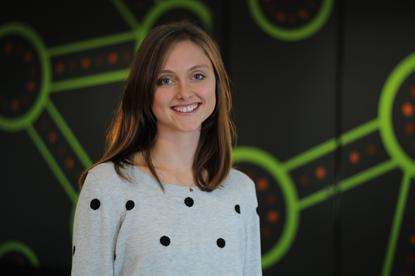Australia's commercial space program blasts off with Sydney start-up
- 26 August, 2016 13:54

Solange Cunin, CEO and co-founder of Quberider
On Monday, a sensor board fitted with a Raspberry Pi A+ Computer, will be carefully packaged up in Sydney and addressed to Houston, Texas.
The diminutive piece of hardware is small enough to fit in your shoe, but represents one giant leap for Australia’s commercial space program.
After being loaded with Python code, in November it will be delivered by a Space X rocket to the International Space Station (ISS), where it will spend a month running hundreds of experiments and beaming data back to earth before being ejected into space.
“It’s the first space mission to the ISS for this entire country,” explains Solange Cunin, CEO and co-founder of Quberider, the Sydney start-up behind the project. “We’re one of the few and first commercial space companies here in Australia.”
Formed last year and accelerated by Telstra’s Muru-D start-up hub, Quberider is on a mission of its own to ‘educate and inspire’ school pupils about coding and careers in IT.
Schools pay to receive a six-month, national curriculum compliant programme and a replica of the NASA-approved hardware to experiment on. The students’ code is collated and put on the device that will be rocketed to the ISS.
“It’s awe inspiring and awesome in the most literal sense of the words,” says Cunin, who has put her UNSW aerospace engineering degree on hold for the company. “So we use that as a tool to really get kids the skills that they need. And give them the motivation to pursue a career in IT fields.
“It makes it much more powerful for a teenager if they can say they’ve beaten the nation’s leading scientists and engineers to participate in the ISS.”
Ideas take off
The device, developed with Hunter Valley-based Obelisk Systems, will sit within a rack inside the ISS, meaning the students’ had to be creative with what they could monitor for their experiments — “which adults suck at, but these teenagers have just blown my mind,” says Cunin. “Everyone needs teenagers on their innovation boards.”
One group is measuring time dilation – the difference of elapsed time between the station and earth, using the hardware’s clock. Another is measuring the radiation that penetrates the ISS’s protective layer to infer if astronauts are at greater risk of cancer or radiation related illnesses. One group is mapping sensor data onto a music score to create a ‘space song’.
“We’ve got the ambitions of thousands of teenagers now riding on this,” Cunin adds.
Getting aboard the ISS was no easy feat. Cunin and fellow co-founder Sebastian Chaoui tapped their network and with a “bit of good luck and good timing” were able to lease space on ISS through US firm NanoRacks.
“They don’t let just any Joe Blow do it,” says Solange. “‘Oh we want to put something up there’. ISS is a billion dollar piece of tech. It’s the most expensive thing man’s ever made,”
Never seen Star Wars
Solange is not your typical self-identified ‘space geek’. She was raised “off the grid in a rainforest” on the coast of New South Wales. She didn’t have a television and to this day has never seen Star Trek or Star Wars.
“So I just grew up under the night sky, building stuff. I was a Lego kid,” she says. “I got my first telescope when I was eight. By the time I was 14 I’d decided what degree I was going to do: aerospace engineering. Then I went and did aerospace engineering. I haven’t actually finished. It’s been put on hold while I do this.”
Her ‘guiding moment’ came in 2012, while watching a live stream of a Space X lift-off.
“It felt like a big personal mind-blowing moment of realising just how much it actually means to me that I’m part of this moment. This step in humanity’s history,” she says.
Quberider’s ambition goes beyond education, although inspiring young people will remain fundamental to the company ethos. Cunin hints at opening their service to a wider public.
“The future’s looking bright. The way we started this is we wanted space to be accessible for anyone, anywhere, any time that you want to access it,” she says.
“I think the whole commercial space industry around the world is working towards actually harnessing it. It’s an immense resource that’s being underutilised by the human species.”
